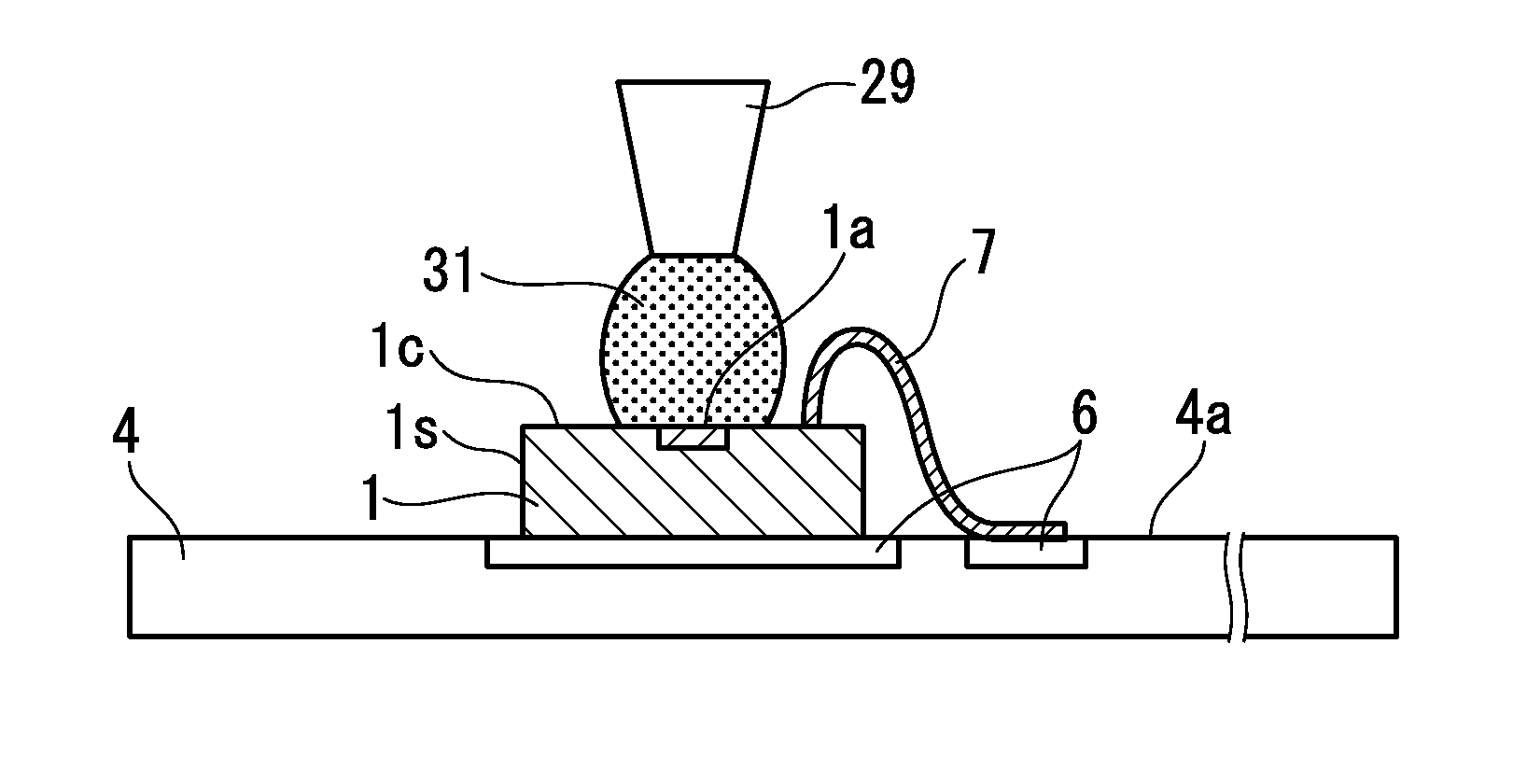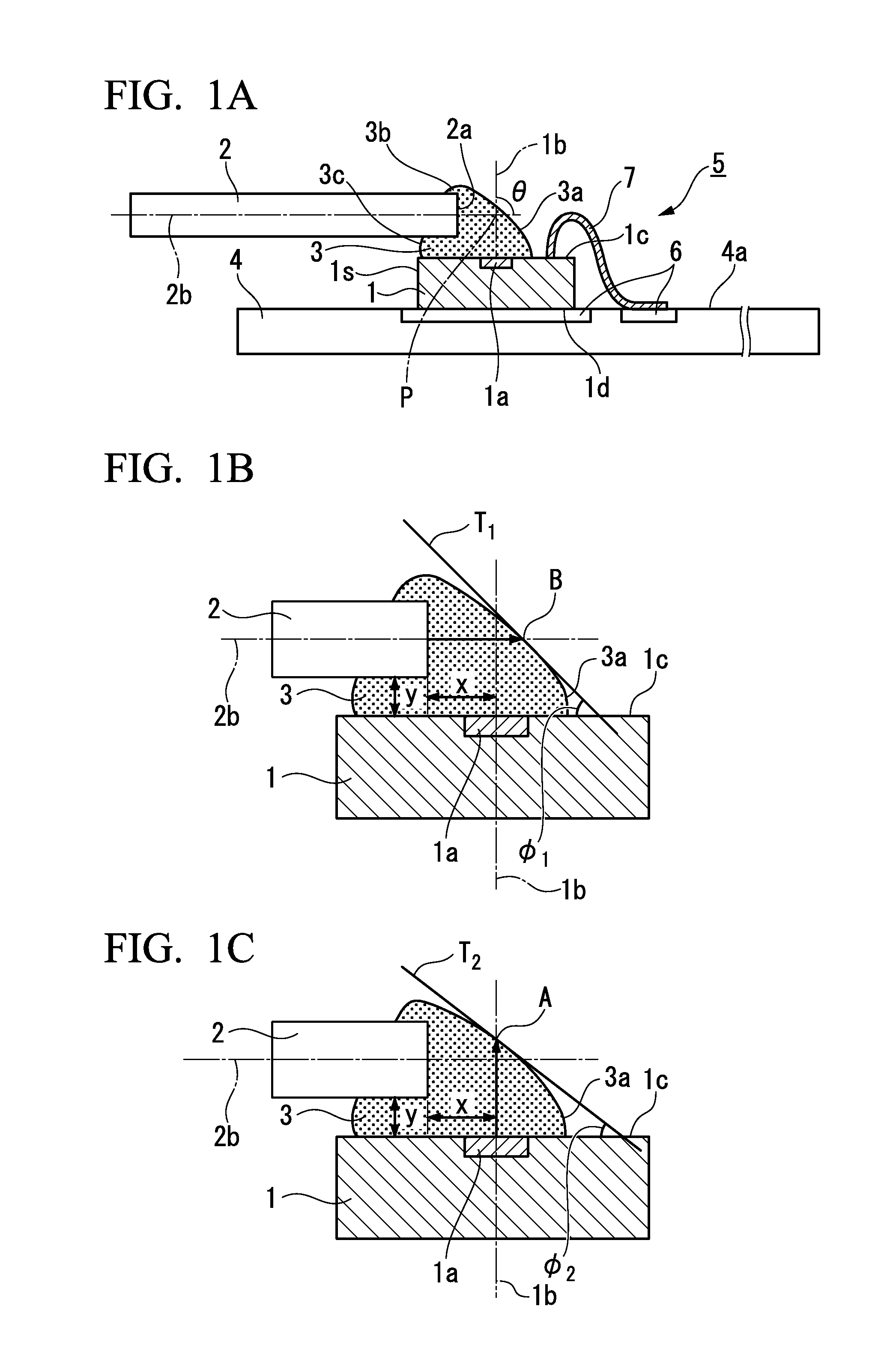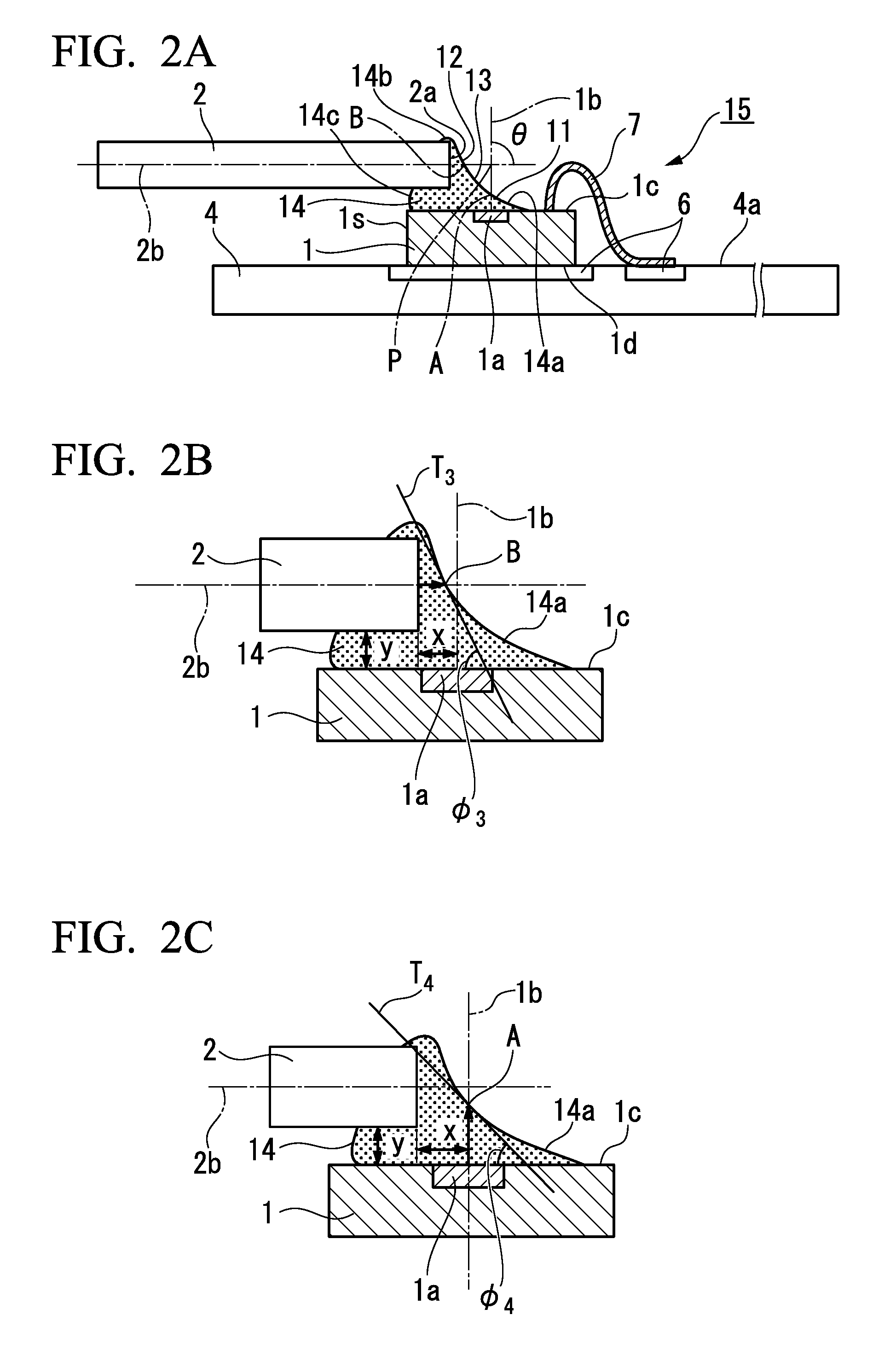Optical coupling structure and optical transreceiver module
- Summary
- Abstract
- Description
- Claims
- Application Information
AI Technical Summary
Benefits of technology
Problems solved by technology
Method used
Image
Examples
example 1
[0178]As shown in FIGS. 1A to 4, as the optical transmission path 2, a silica based multi-mode optical fiber with a cladding diameter of 125 μm and a core diameter of 50 μm was prepared. For the optical semiconductor element 1, a PD (aperture diameter of the light receiving portion being 80 μm) was used as the light receiving element, a VCSEL (aperture diameter of the light emitting portion being 12 μm) was used as the light emitting element, a UV-curable resin (acrylic resin) is used for the transparent resin 31, a glass-epoxy substrate was used as the substrate 4, and a gold wire was used for the wire interconnect 7. After applying 2 nl (nanoliters) of the transparent resin 31 on the light receiving / emitting portion 1a (the light receiving portion of the PD or the light emitting portion of the VCSEL) of the optical semiconductor element 1, the distal end of the optical fiber was inserted into the transparent resin, and the optical fiber was pulled up a distance of 40 μm obliquely ...
example 2
[0183]Optical coupling portions were fabricated with the period of time from pulling up the optical diver to UV irradiation being constant, and the shape of each obtained optical coupling portion was observed. Table 3 shows the case of the period of time from pulling up the optical fiber to UV radiation being 3 seconds, and Table 4 shows the case of the time from pulling up the optical fiber to UV radiation being 2 minutes.
TABLE 3Period of time from pulling up optical fiber to UV radiation: 3 secondsSample NameABCDEFGHIJKViscosity (Pa · s)0.020.10.71.53.25.51521263550Range of OpticalViscosity is tooNo contact with wireCoupling Portionlow, so resindoes notremain onelementShape of Optical—ConcaveConvex shapeCoupling Portionshape
TABLE 4Period of time from pulling up optical fiber to UV radiation: 2 minutesSample NameABCDEFGHIJKViscosity (Pa · s)0.020.10.71.53.25.51521263550Range of OpticalViscosity is tooContactNo contact with wireCoupling Portionlow, so resinwith wiredoes notremain on...
PUM
 Login to View More
Login to View More Abstract
Description
Claims
Application Information
 Login to View More
Login to View More - R&D
- Intellectual Property
- Life Sciences
- Materials
- Tech Scout
- Unparalleled Data Quality
- Higher Quality Content
- 60% Fewer Hallucinations
Browse by: Latest US Patents, China's latest patents, Technical Efficacy Thesaurus, Application Domain, Technology Topic, Popular Technical Reports.
© 2025 PatSnap. All rights reserved.Legal|Privacy policy|Modern Slavery Act Transparency Statement|Sitemap|About US| Contact US: help@patsnap.com



